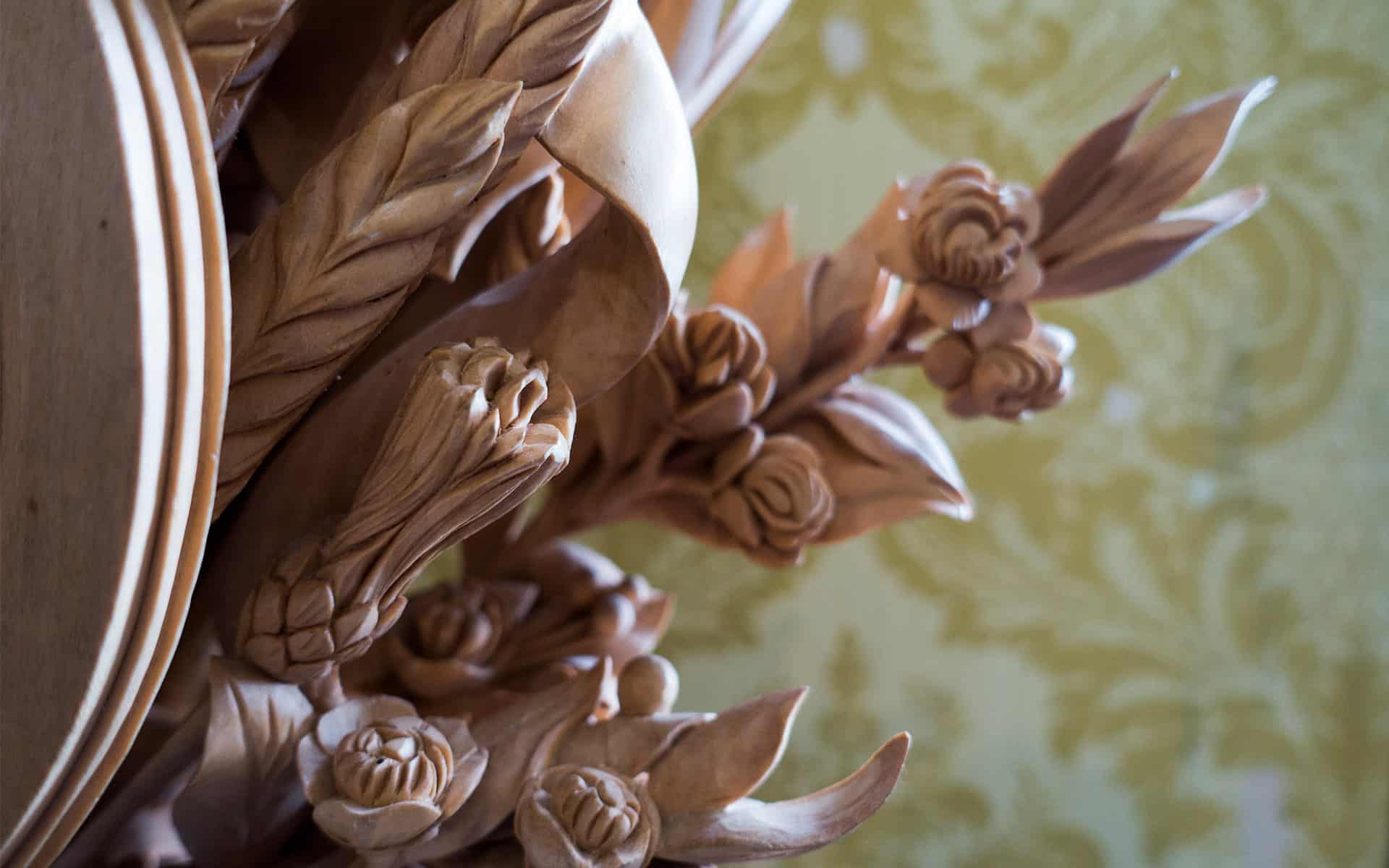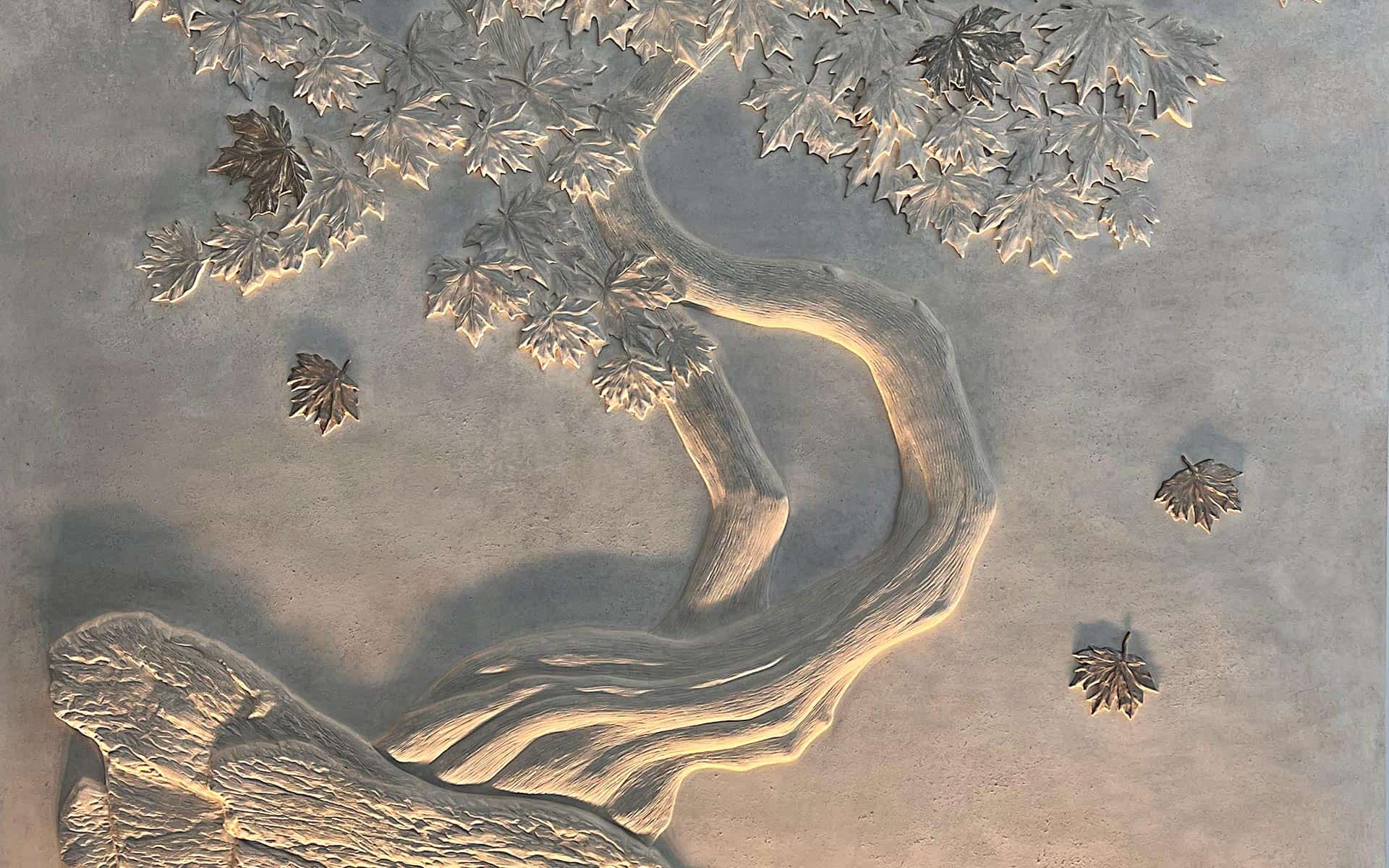Today, we want to take a deeper look at the craft of gilding – the decoration of surfaces through the application of gold leaf and other precious metals. In this increasingly digital age, the number of people choosing to pursue a career in applied arts and traditional crafts is ever declining and some crafts like gilding are now so rare that they are threatened with being lost completely. In recent decades the ancient craft of goldbeating became extinct in the United Kingdom, as the last practising artisan failed to find an apprentice to take over the trade. At DKT Artworks, we take pride in the diverse range of crafts, both traditional and contemporary, that are practised by our team and are continuing to be preserved and developed through our work. Gilding’s continued status listing as ‘Endangered’ on the Heritage Craft Association’s Red List of Endangered Crafts has inspired us to shed some light on this notoriously capricious material, and the hands that have mastered it.
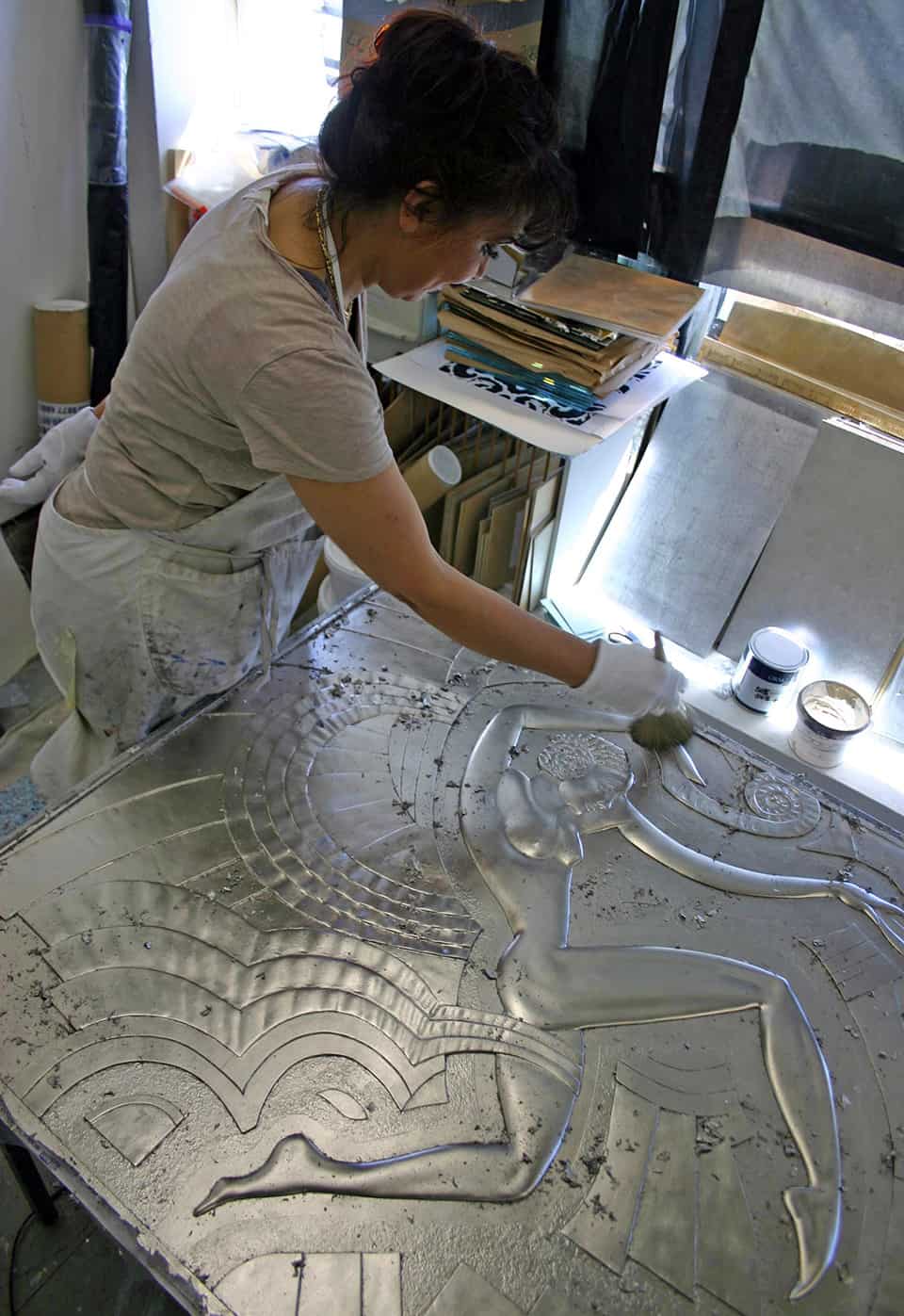
From a mural project where we combined hand-painting and gilding.
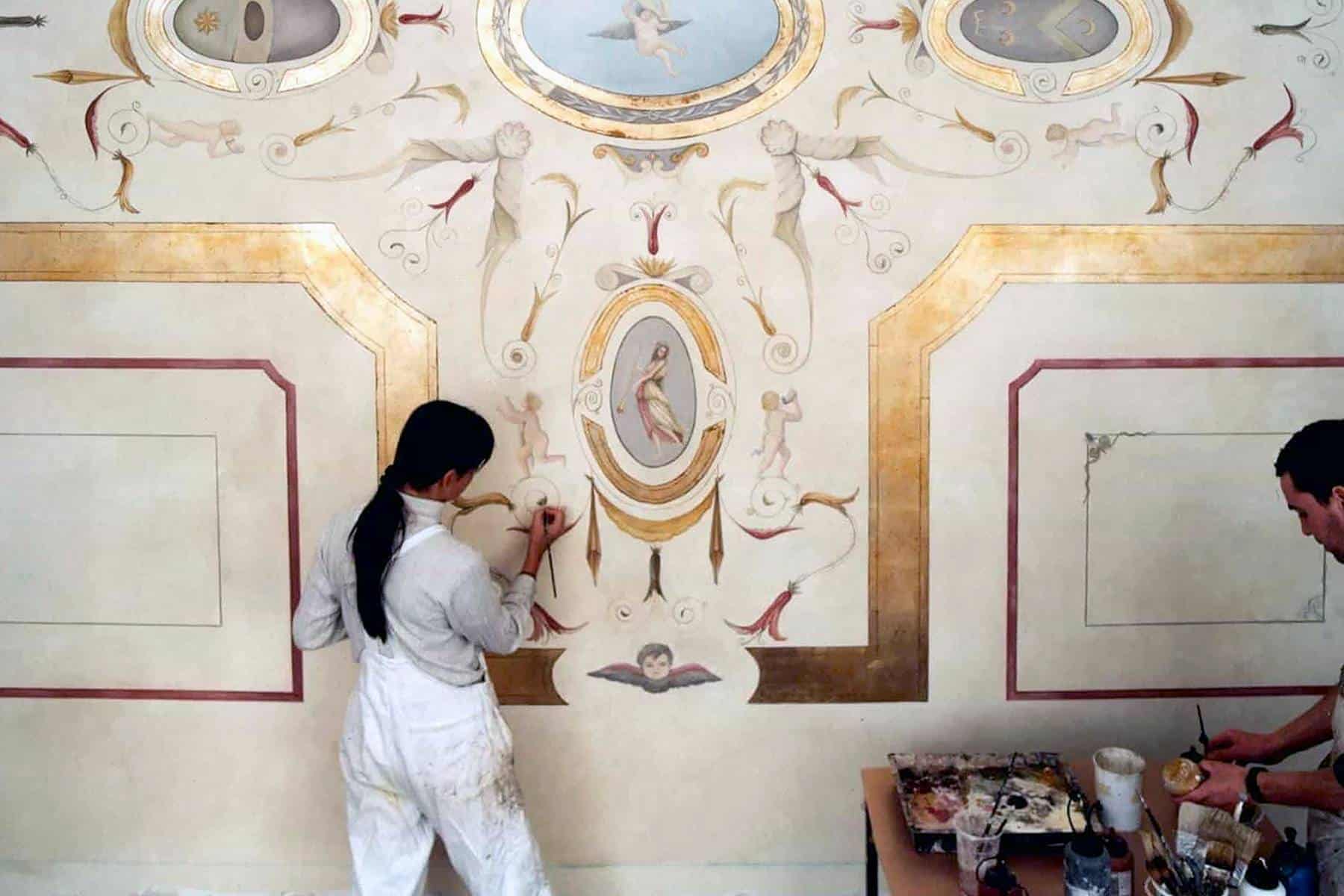
What kinds of gilding are there?
Many different forms of gilding have been practised throughout history, from the poisonous and now banned fire gilding to mordant gilding using garlic juice, liquor and glair. But the two primary forms we use at DKT Artworks today have remained largely unchanged since their use in ancient times, with a little less dragons blood, gamboge and dogs teeth.
- Water gilding involves flooding the surface with a gelatine solution and applying the gold. The gold leaf is pulled taut as it dries and can then be polished to a high shine. Requiring both precision and patience with no margin for error, this is one of the most difficult ways to work with gold. We use this technique on glass, in the creation of verre églomisé artworks and hand gilded antique mirrors. We also use water gilding in our stucco department, applied over gesso and bole and then burnished.
- Oil based mordant gilding uses an oil based glue to adhere the leaf to the surface. This technique produces a softer, more matt finish and is water resistant, so can be used outdoors. We often use this method of application on items of furniture and interior and exterior architectural features.
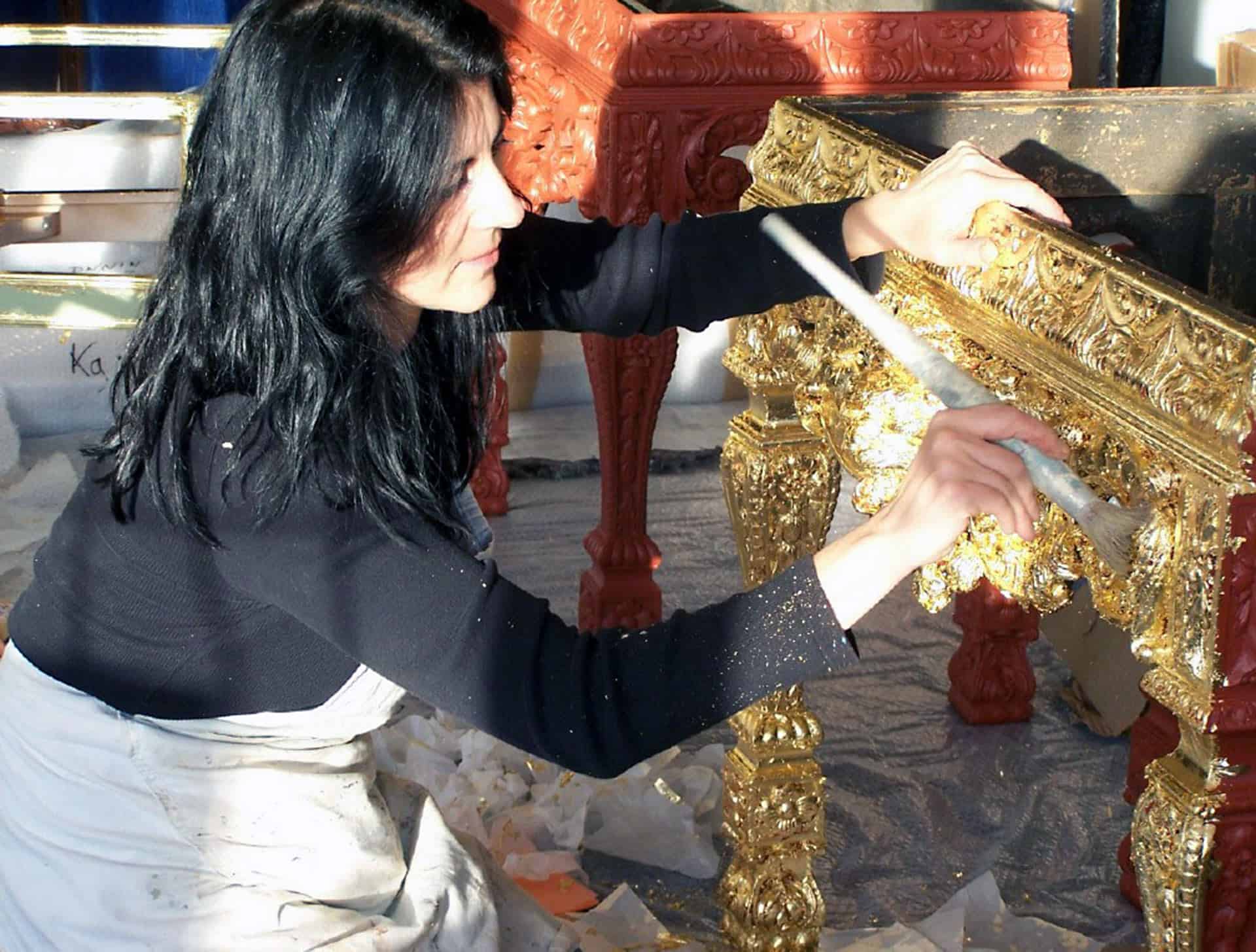
An example of oil based mordant gilding for architectural mouldings, by DKT Artworks.
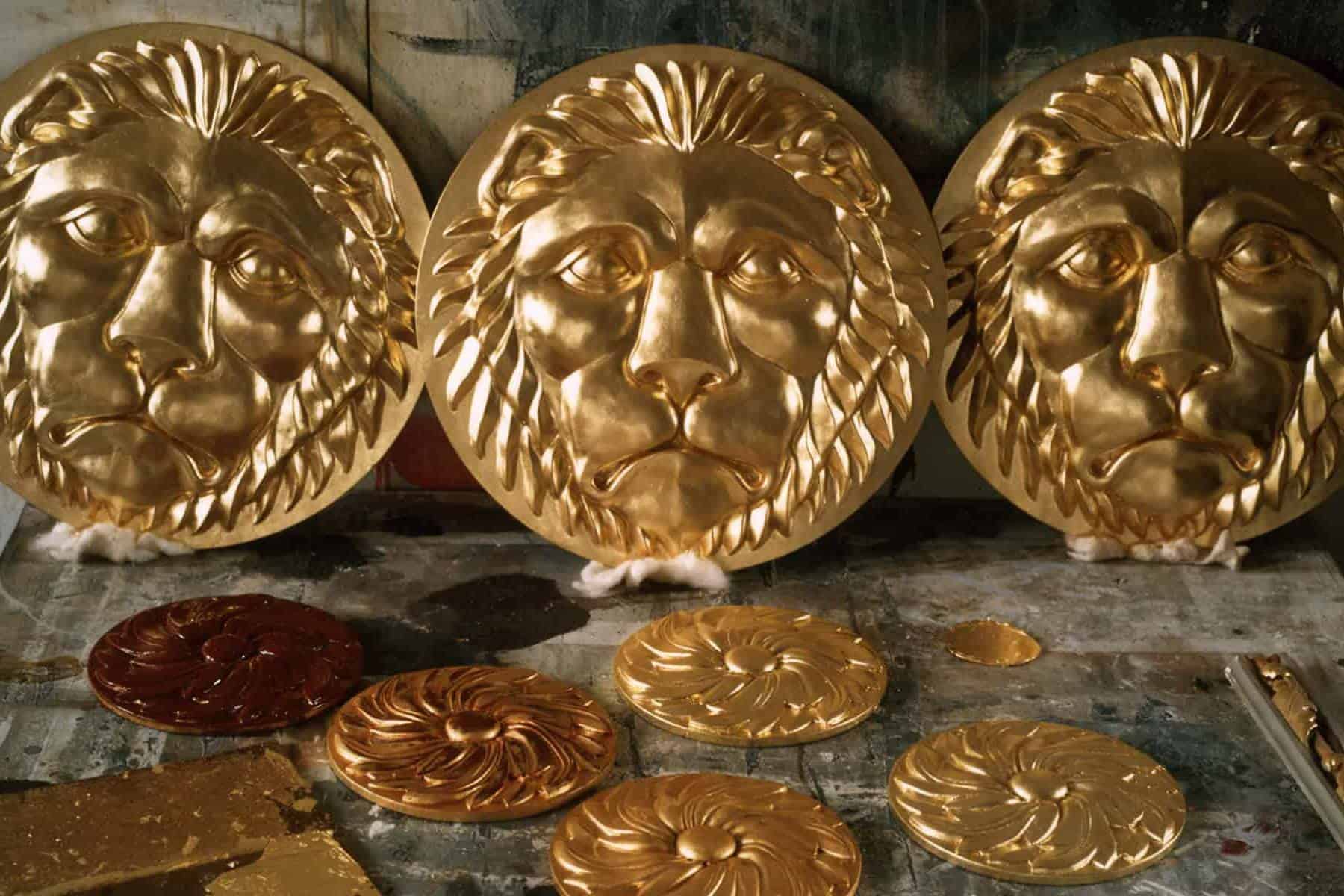
A brief history of gilding
Gilding is one of the few remaining skilled finishes that has continued to defy all methods of mass production. There is no way to truly imitate a gilded surface, whether through printing, spraying or any other form of modern mechanisation. At 4 millionth of an inch thick, it requires years of practise to lift and apply the fragile gold leaf with finesse.
This paradox is perhaps what makes gilding so special, a raw material so delicate it cannot be touched by hand but once applied, so durable that it can survive centuries.
The technique of applying beaten sheets of gold to a surface or object to imitate solid gold has been practised for thousands of years. You can trace its use in art and culture throughout Ancient Egypt, Mesopotamia, China, Ancient Greece and Rome. Museums across the globe hold records and examples of its use to adorn an array of surfaces such as sarcophagi, statues, temples, manuscripts, textiles, ceramics, and even the human body. As the craft developed, so too did the processes. The thick gold foil which could be applied by hand became the thinly beaten leaf, similar to that we know and use today, requiring a specialist brush (or gilders tip) to apply.
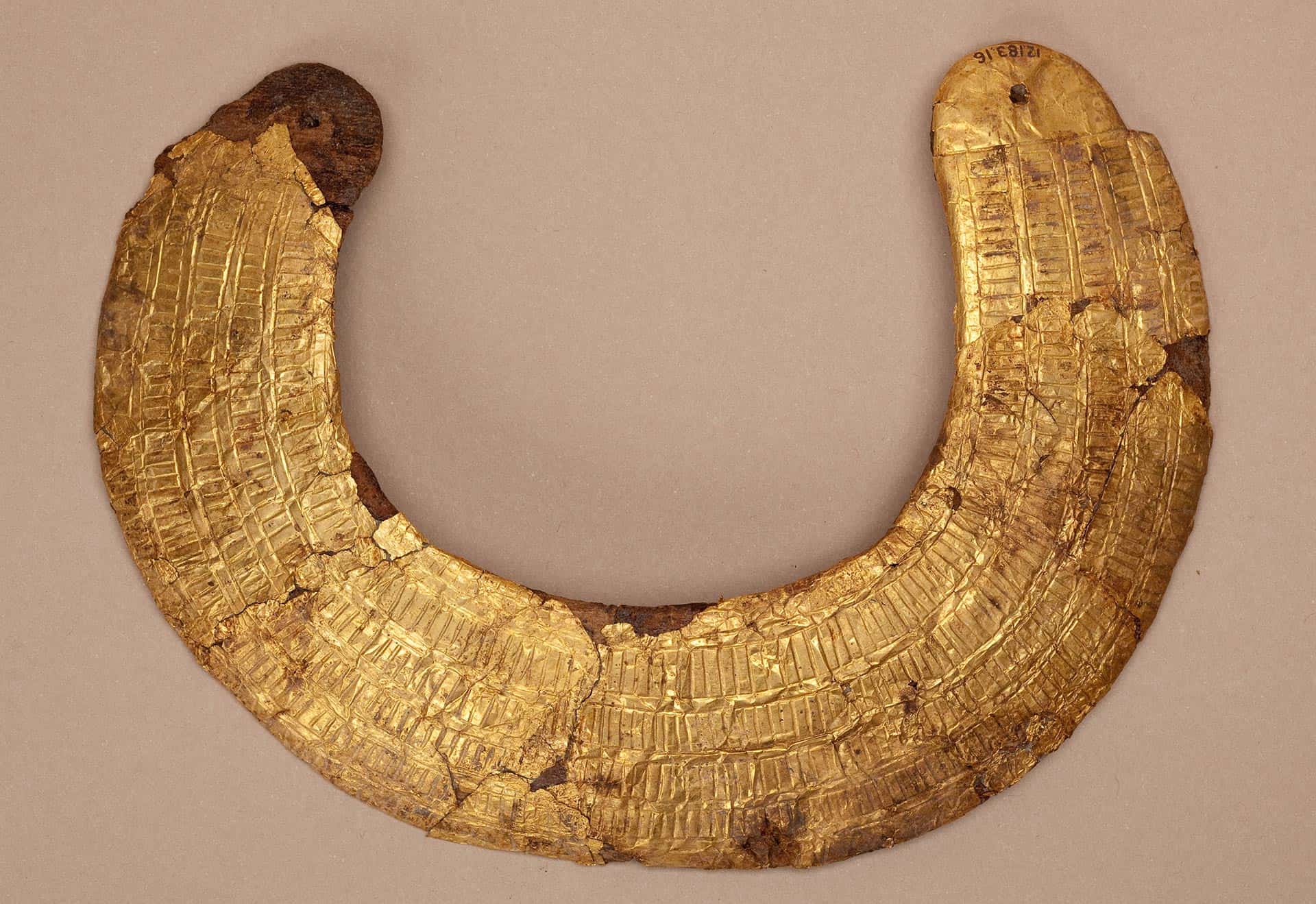
Egyptian model collar, gilded wood and gesso, ca. 1981–1802 B.C. From The Metropolitan Museum of Art.
The use and development of gilding can be followed from these early civilisations onwards, until its use reached a peak in the 17th – 19th centuries. Throughout this time gilding was being applied to furniture and interiors with abundance. No building of note, whether a palace, grand home or cathedral, was complete without liberal amounts of gold applied to architectural features both inside and out. It was during this period that gilders were recorded as prominent members of society such as Pierre Gouthière, appointed royal gilder to King Louix XV.
But with the turn of the 20th century changing fashions called for less ornate finishes and the use of gilding began to lessen, with the number of practising artists declining with demand. By the 21st century, the number of practising master gilders was a fraction of what it had been at the height of its use just a few centuries before. But a continuous appreciation of gilding’s timeless appeal as an undisputable sign of quality and classic luxury kept the craft alive.
An example of Pierre Gouthière's work at the Frick Collection. By Fred R. Conrad for the New York Times.
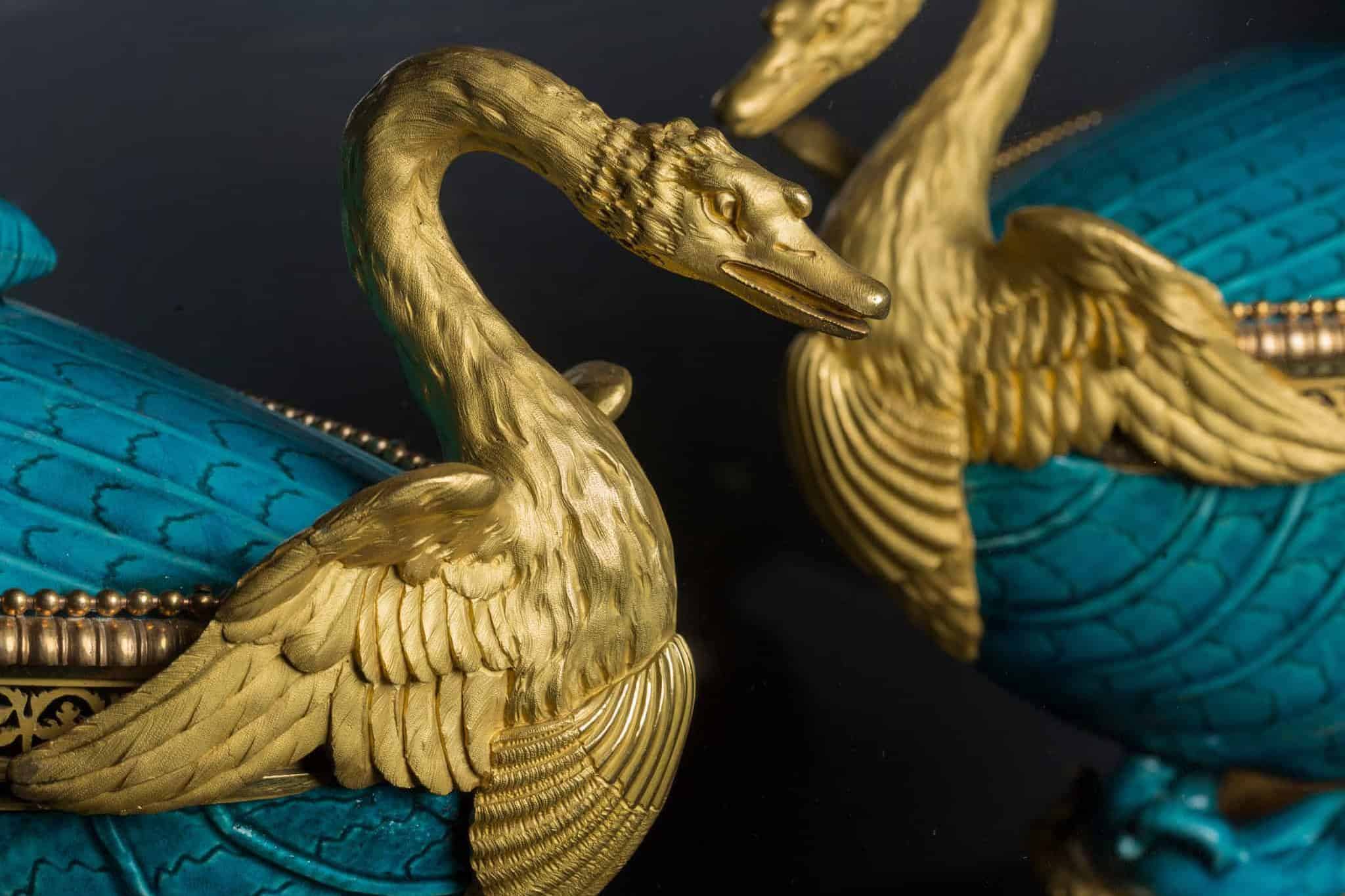
Gilding today
In recent years, studios and artists have developed adapted techniques, which have pushed the boundaries of gilding from the classical into a new aesthetic era. Gilding is no longer seen as a finish for just plaster and picture frames and its application is limited only by imagination. With leaf production now including other precious metals, gilders now have a palette beyond the traditional yellow gold, including champagne, moon, white gold, rose gold, palladium and platinum amongst many others.
New chemical methods of patination and distressing offer different texture, depth and tone. Distressed and antiqued surfaces are no longer restricted to the classic bole colours such as red and ochre, with unlimited modern colour combinations being used to highlight detailing or enliven flat surfaces in new ways.
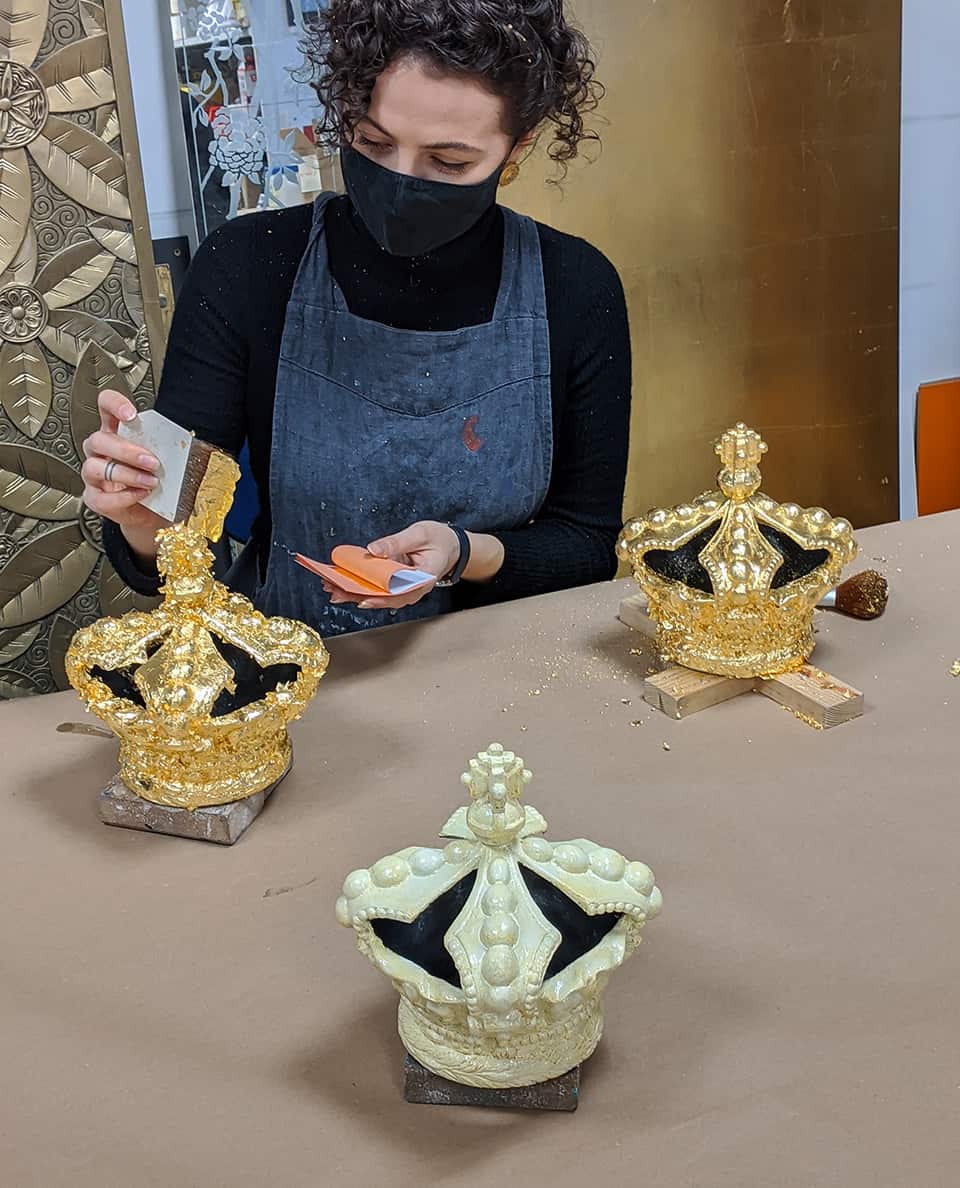
Gilding of the Wallace Collection's crown finials as part of a larger restoration project, at our London studio.
The thinness that modern leaf can be beaten to gives it the ability to be both opaque and transparent, opening up new uses on glass and lighting installations playing with reflection and glow. The advances in leaf production and gilder’s tips means we can achieve a greater symmetry and simplicity in our lap lines than was possible in the past.
In the studio we are continually developing new and innovative ways of working with precious metals to keep this ancient craft alive and connecting past and present craftsmanship.
Related Posts
Unveiling the Rich History of Bas-Relief Sculpture with Inspiring Examples
Texture comes in many forms throughout the world of interiors, and bas-relief sculpture may just be…
Art & Ornament exhibition at Dalkeith Palace
This year marks 300 years since the death of one of the most celebrated decorative woodcarvers of…
The Maple Tree
When planning our display for London Design Week this year, we knew we wanted a feature artwork…

